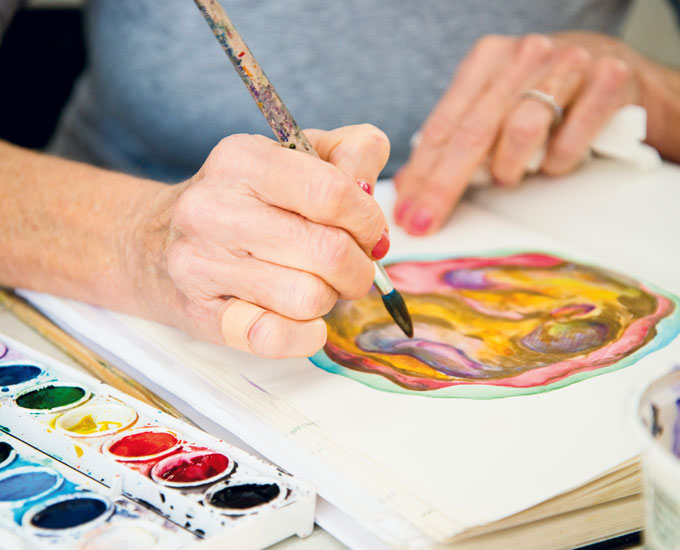As our bodies age, we notice that scrapes and bumps which once healed quickly (and still do so on our young grandchildren’s bodies) now take months to disappear. Signs of aging and physical scars go together in lockstep.
One scar, on my right thumb, now looking like the letter Y, has served me well as a metaphor for how our hearts can heal. The initial injury happened within the first month of my own singleness. I was excited to open a shrink-wrapped picture frame, grabbed a pair of scissors to tear the cellophane and instead slashed across my thumb. I immediately knew I needed stitches and so a fast trip to the ER followed. The attending doctor said, “You’ve sliced right through your tendon. To repair it I’ve got to make another incision in the other direction, find the two tendon ends and then stitch them together.” (He also said, “You seem pretty tough. Want to watch?”)
I then watched him cut open my thumb, re-attach my tendon ends and put my entire forearm into a plaster cast. He explained that this tendon connected my thumb to my elbow so the whole arm had to be immobilized. I was told “No typing!” I was a university student at the time and so typing was vital to my academic life. I’ll admit, I cheated a little, finding a way to type with my left hand and just a few right fingers.
That injury took months to heal and looked awful for some time. Now, years later, it’s a faint white Y on an aging wrinkled hand. And, if I remember to use it, that scar makes a great metaphor.
When the injury happened, my heart was also broken. But, just as I sought professional medical help for my thumb, I looked for and found both professional and a caring group of friends to help my injured heart.
I needed people to be there for me for both injuries. If I hadn’t gone to the ER with my thumb, I could have lost the use of it forever. But I did, and my thumb works just fine. If I hadn’t found support for my broken heart, I might have been left with a heart that was angry and bitter. But I did, and now my heart is still very capable of loving and accepting love. My thumb works. My heart works.
A viral post on the online forum Reddit affirms the value of scars. A woman had posted that she was grieving the death of a friend. A self-proclaimed old man replied saying that he had outlived friends and family and offered the following wisdom,
“I wish I could say you get used to people dying. I never did. I don’t want to. It tears a hole through me whenever somebody I love dies, no matter the circumstances. But I don’t want it to ‘not matter.’ I don’t want it to be something that just passes. My scars are a testament to the love and the relationship that I had for and with that person. And if the scar is deep, so was the love. So be it.
Scars are a testament to life. Scars are a testament that I can love deeply and live deeply and be cut, or even gouged, and that I can heal and continue to live and continue to love. And the scar tissue is stronger than the original flesh ever was. Scars are a testament to life. Scars are only ugly to people who can’t see.”
His response has since been oft quoted and for good reason. What he says is truth. If we had no scars, we would have had no life and no love. If today you are scarred and crooked, you have lived and loved. And those scars deserve to be honoured.
You may be shaking your head, wondering how you could possibly honour your scars. Honouring does not need to be monumental or even shared. You can honour your scar simply by acknowledging it’s existence. You can honour your scar by recognizing and naming how the injury happened.
One way to honour our injuries is by using art therapy. Art therapy is different from ART — even though both use the same raw materials — paints, paper, canvas, clay, and more. Art therapy isn’t for exhibition and may not even be shared privately with others. Art therapy is just for our own healing process.
So, even if you have not drawn or painted since you were a child (and art therapy is often used with children), now may be a good time to pick up some coloured pencils, some paints and brushes, some paper or dollar store canvases and honour your scars with some therapeutic art. Without judging whether this is good art or not, let your scars teach you how they want to be made visible — and therefore, honoured. For more art therapy helps and hints, see the resource links below.
Online Resources:
What’s Your Grief: Art Journal activity
Open to Hope: 10 Artistic Activities to Help with Grief

